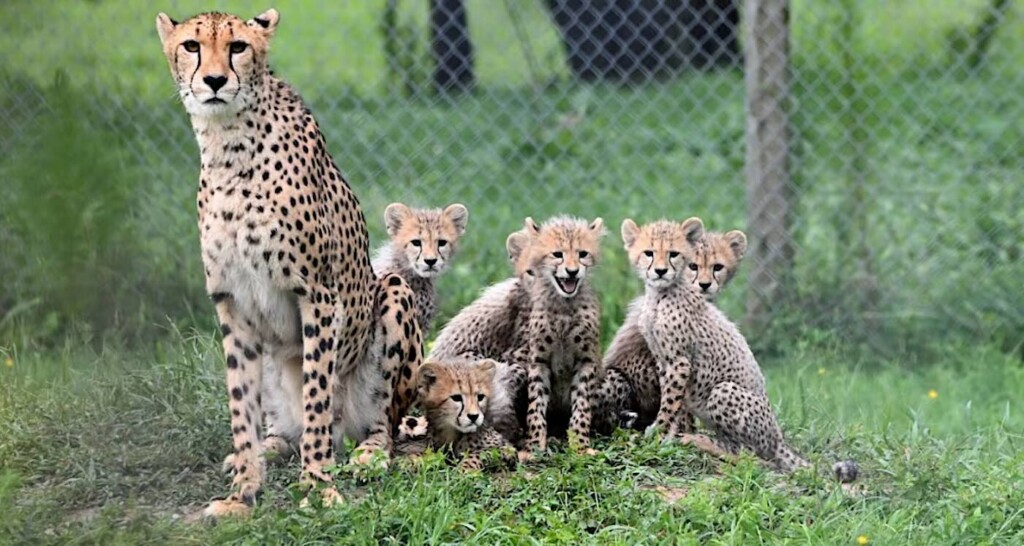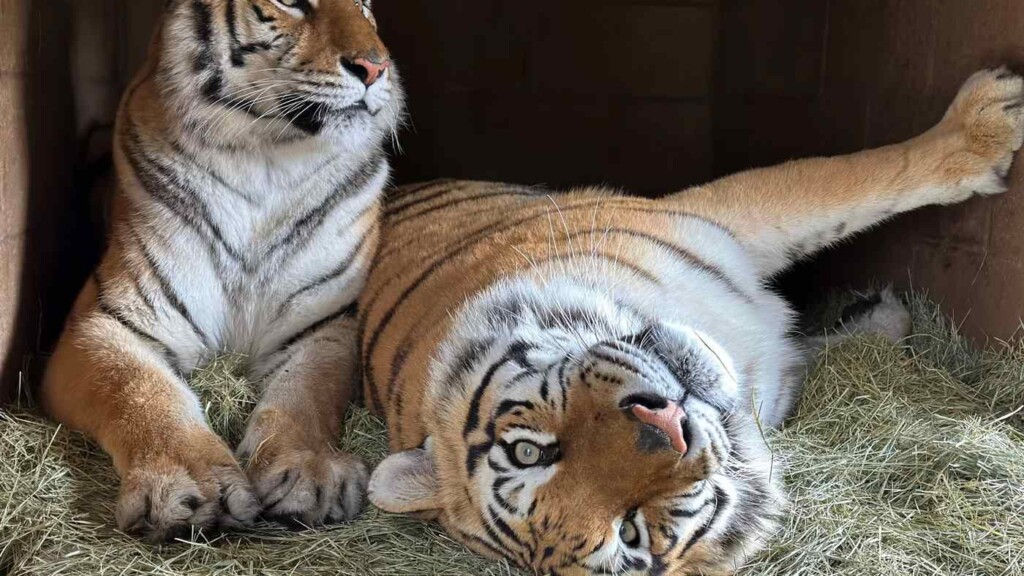
Six cheetah cubs with their mother –Courtesy of Metro Richmond Zoo
At a zoo in Richmond, a raucous litter of cheetah cubs is delighting onlookers having spent the summer months growing in secret.
One of the largest litters born at the zoo, the three-month-old cubs are hitting milestones and progressing well towards adolescence.
Named after African capitals, such as Lusaka, Kampala, and Cairo, the cubs were born in April but were kept hidden away to develop in peace through their most sensitive period with mother Zuri.
Sprinting, jumping on each other, and investigating every object in their enclosure, they seem well on their way to becoming the world’s fastest land animal.
“Some are shy; one is bold and brave — that’s Lusaka,” said Kristina Coonley, a lead zookeeper at the Metro Richmond Zoo, Virginia. “[Cairo] is always the last one out and the last one to come in.”
Though just the 99th most populated city in America, the Richmond Zoo nevertheless boasts one of the country’s most prolific and successful cheetah breeding program for purposes of conservation. Zuri’s litter of 6 takes the total number of captive-born cubs in the program’s history to 167 since 2013.
Coonley told the Washington Post that the Cheetah Conservation Center looks carefully and genetics and disposition when deciding which of their cats are suitable for breeding. Zuri is 5 years old, and has already mothered one litter. Her partner was Ramses, a 13-year-old sire of 25 other cubs.
Though losing out on conservation column inches to the likes of the lion and tiger, cheetah are considered Vulnerable by the IUCN. With around 6,500 individuals across the whole of Africa, a relic populations in Iran, and a diminishing introduced population in India, they are the most at-risk of the African big cats because of their need for space befitting the world’s greatest sprinters.It’s no bad thing then that the Metro Richmond Zoo has seen even bigger litters than these 6, with a resident female last year bringing 9 little mohawked babies into the world. Six Baby Cheetahs Born in the Richmond Zoo's Prolific Breeding Program – 167 Cats Since 2013 (WATCH)

 The lion that escaped from a circus near Rome posed no threat to the public, his handler insisted Sunday, as campaigners called for Italy to ban wild animals in entertainment.
The lion that escaped from a circus near Rome posed no threat to the public, his handler insisted Sunday, as campaigners called for Italy to ban wild animals in entertainment.
